How to succeed with the AHL2 winter bird food option in SFI
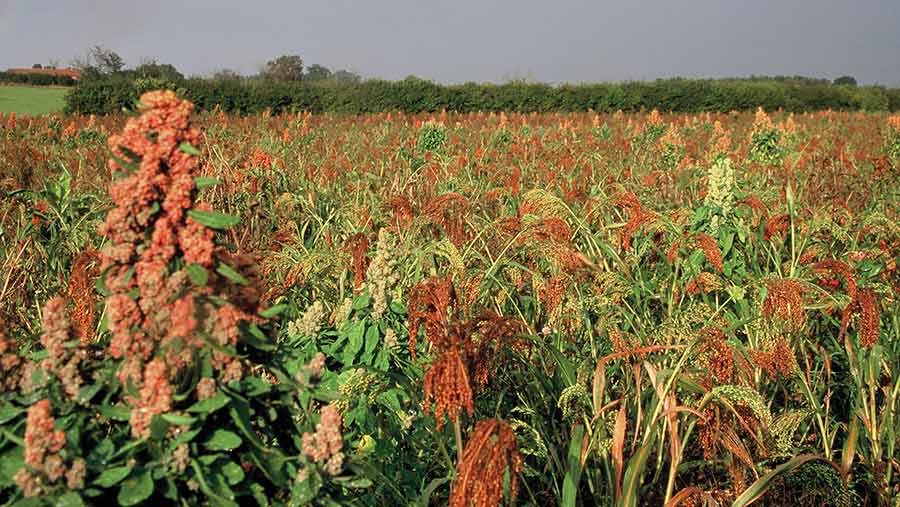 © Marek Nowakowski
© Marek Nowakowski Filling the hungry gap for smaller farmland birds from late autumn through to late winter by providing a supply of small seeds on arable and horticultural land is the relatively familiar aim of AHL2 in the Sustainable Farming Incentive.
The biggest killer of farmland birds is starvation in the winter, explains Marek Nowakowski, who runs his own environmental stewardship consultancy, Wildlife Farming Company.
“It’s a nice, simple message: if you feed them, they won’t starve to death.”
See also: How to achieve success with IPM2 flower-rich margins in SFI
Feeding them involves sowing at least six species that will provide a supply of small seeds during those winter months, with mixes tending to be either annual or biennial.
No one species can be more than 90% of the mix. Payment rate is £853/ha.
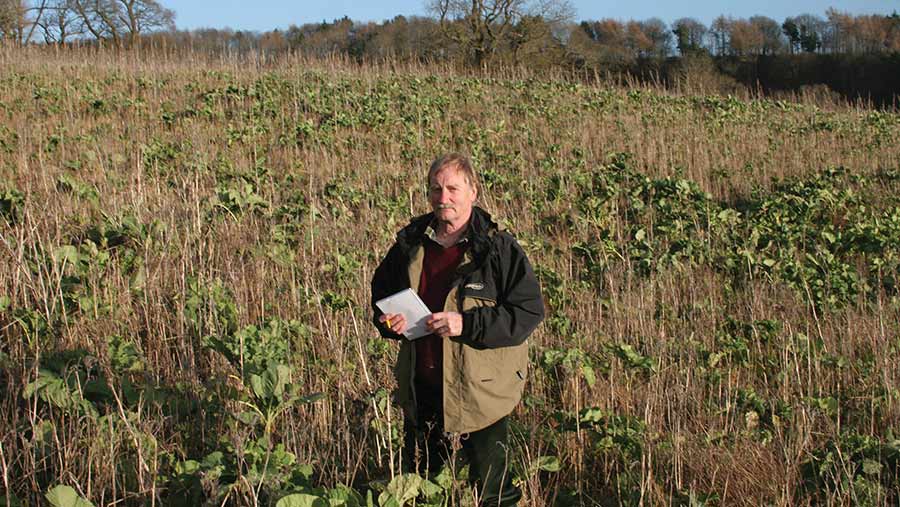
Marek Nowakoski © Marek Nowakowski
Species mixes
Annual mixes, as the name suggests, only last for one season. These tend to involve species such as fodder radish, mustard, reed millet, quinoa, camelina, linseed and red and white millet.
“You can leave it to regenerate the following year, which is ideal for brood rearing cover, giving a degree of safety and sanctuary, but it’s very unlikely to produce seed in the second year, making them unacceptable for the schemes,” Marek says.
Biennial mixes – which will cost £140-£160/ha, rather than £100-£140/ha for annual ones – usually also contain brassica species such as kale, stubble turnips or teasel that will survive for a second season.
While it is cheaper on a yearly cost basis, a biennial mix generally won’t yield the same as two annual mixes, and is likely to have greater problems from pests such as cabbage stem flea beetles and pollen beetles with the addition of brassica species, Marek says.
“You can use insecticides and herbicides, provided you follow label recommendations.”
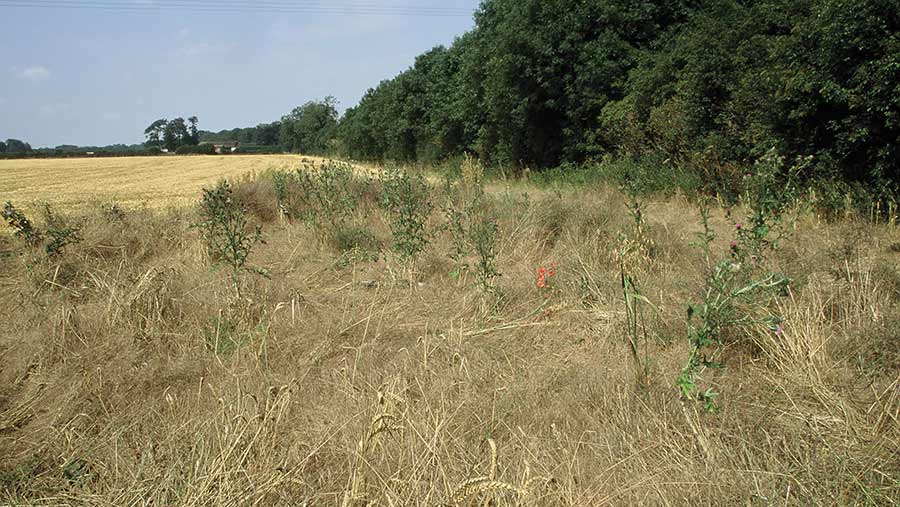
A poor annual winter bird food mix © Marek Nowakowski
Kale, he suggests, is a good addition to annual mixes as it attracts lots of caterpillars and other insects.
This will provide an additional benefit for bird species such as blackbirds, thrushes and hedge sparrows that prefer eating invertebrates.
“If you put in kale that the insectivorous birds eat, it’s just a better all-round mix.”
The key is to grow a number of different seed sizes in your mix, he stresses.
“Little birds such as goldfinches won’t eat the same seeds as something like a corn bunting, so if you maximise variety, you have a greater opportunity for more species feeding on what you have sown.”
Think about likely weed problems when putting together a mix, he adds.
“It can be worth putting together backwards – if you know you will have a thistle problem, put together species that will tolerate a legal thistle spray, and the same with grassweeds.”
There are some restrictions on sowing of species that are not appropriate for smaller farmland birds. On the no-sow list are artichokes, reed canary grass, giant and intermediate sorghum, maize, miscanthus, sweet clover or tic beans.
The biggest challenge with most mixes is that they run out of seeds by January, still leaving a hungry gap from February into early April.
“My research shows that once no more than 20% of the seed is left, the birds leave, as they’re burning more energy than they can get back.”
Supplementary feeding
This is why supplementary feeding should be considered as part of the plan.
While that’s a paid option in Mid and Higher Tier Countryside Stewardship (CS), it’s currently not included in the Sustainable Farming Incentive (SFI), although Marek says it should be added later this year.
In Mid Tier, farmers are paid £732/t for every 2ha of winter bird food.
“Without it, all you’re doing is delaying the bird’s inevitable death in February or March, so I would encourage farmers doing AHL2 to do this off their own back this year, if possible,” Marek says.
Treat wild bird food areas on the farm like a crop – go for yield, he stresses. It works best on fertile sites in sunny locations.
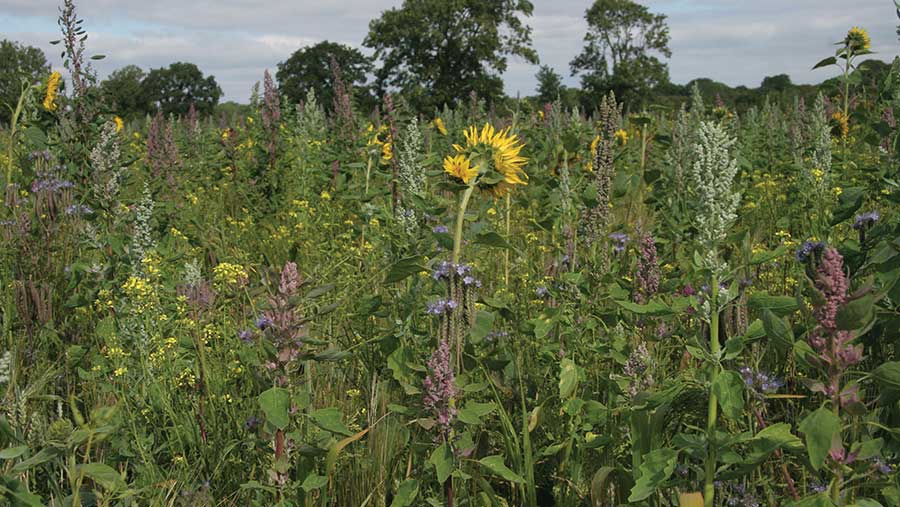
A successful mix should offer birds different seed sizes © Marek Nowakowski
“You’re looking for the complete opposite than when you grow flowers. The golden rule is to site it close to where a bird can seek refuge to help protect them from raptors.
“Planting it as near as possible to a hedge is sensible, for example, so the bird can bolt for cover. Ideally, it should be on the west or south side because it’s more sheltered and warmer, which can make a big difference.”
Unlike AB9, where there is a maximum plot size of 5ha, there are no restrictions in the SFI.
“The big advantage of size is that it lasts longer – in thin strips the birds have a large edge effect and eat everything more quickly. If you have a whole field, it takes longer for the birds to reach the middle.”
Drilling
Winter bird food can be drilled anytime from March through to the end of May, either directly or into a lightly cultivated stubble or overwintered cover crop sprayed off with glyphosate.
“You’ll be okay with a winter wheat-type seed-bed rather than a finer one like for spring barley,” Marek suggests.
Drill to a depth of about 2.5cm and if your drill allows separating the bigger and smaller seeds can be helpful.
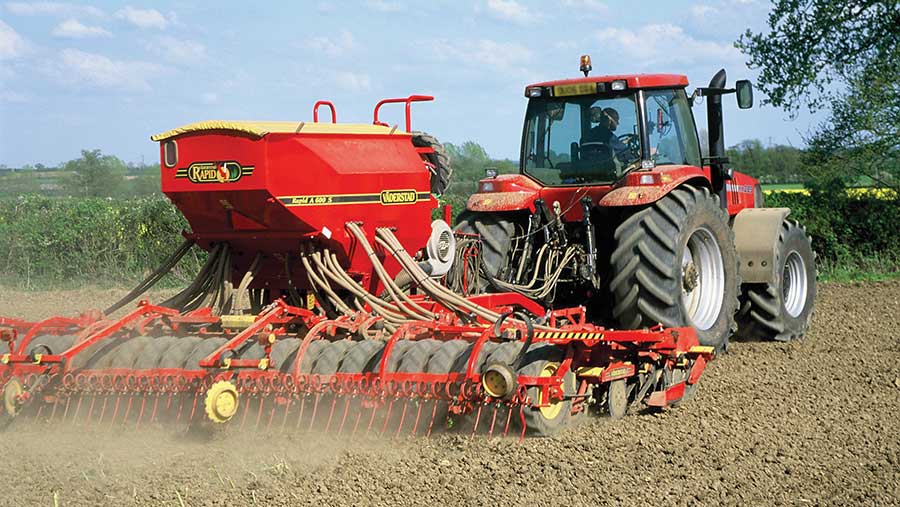
Winter bird food mixes can be drilled from March to the end of May © Marek Nowakowski
Earlier drilling in March can lead to bigger seed yields when sown in good conditions, but also risks being slow out of the blocks and being vulnerable to greater pest or disease threats.
“The key things are moisture and temperature,” Marek says. “You could tie it into when stems are extending in cereals, so you are in no doubt you will have good growing conditions.”
Earlier sowing dates give a chance for re-establishment in the case of failure, while later sowings can be helpful where brassicas are in the mix, as they will grow faster to get past cabbage stem flea beetle attacks.
On heavier land, where spring drilling is not as easy, there is an option to drill winter bird food in the autumn, but it won’t deliver the benefits until the following winter, in its second year.
Varieties for that will differ as they need to be able to survive the winter, but could include winter cereals, kale and camelina.
Management
Once drilled, Marek advises ring-rolling if the ground is a bit puffy rather than flat-rolling, which can encourage capping, and also applying nitrogen.
In Mid Tier CS the recommendation was for 50kg N/ha, and that’s the minimum Marek suggests for AHL2 in the SFI, depending on the previous crop.
Typically, Marek suggests siting AHL2 in the same place for no longer than three years to avoid weed problems getting out of hand.
“Quite often, you might have built up an annual weed problem, such as polygonums or chickweed, so after three years I would consider swapping into an option like pollen and nectar which allow you to mow your way out of an annual weed problem.
“That would make a good environmental rotation,” he says.
If the land is going back into the arable rotation, it cannot be before 15 February. A spring cereal or a summer cover crop are the most obvious options to follow.
“If you’re growing a spring cereal you may need to consider upping seed rates as the soil structure will have changed under wild bird food plots,” Marek concludes.
Late drilling tests government philosophy change
The main difference between AHL2 and AB9 in Mid Tier Countryside Stewardship (CS) is the switch in government philosophy between providing guidance in CS and leaving farmers to implement the aim in the Sustainable Farming Incentive without too much prescriptive advice.
The danger is it could lead to farmers perhaps not entering into the spirit of the aim, suggests environmental stewardship consultant Marek Nowakowski.
“For example, drilling winter bird food mixes after cereal harvest before putting in a spring crop is not going to produce seed for birds in the winter. Most of these plants require a spring to grow, flower and set seed.
“It’s just trying to beat the system, and I fear if the system is abused, the greater freedoms will be clamped down on,” he warns.

